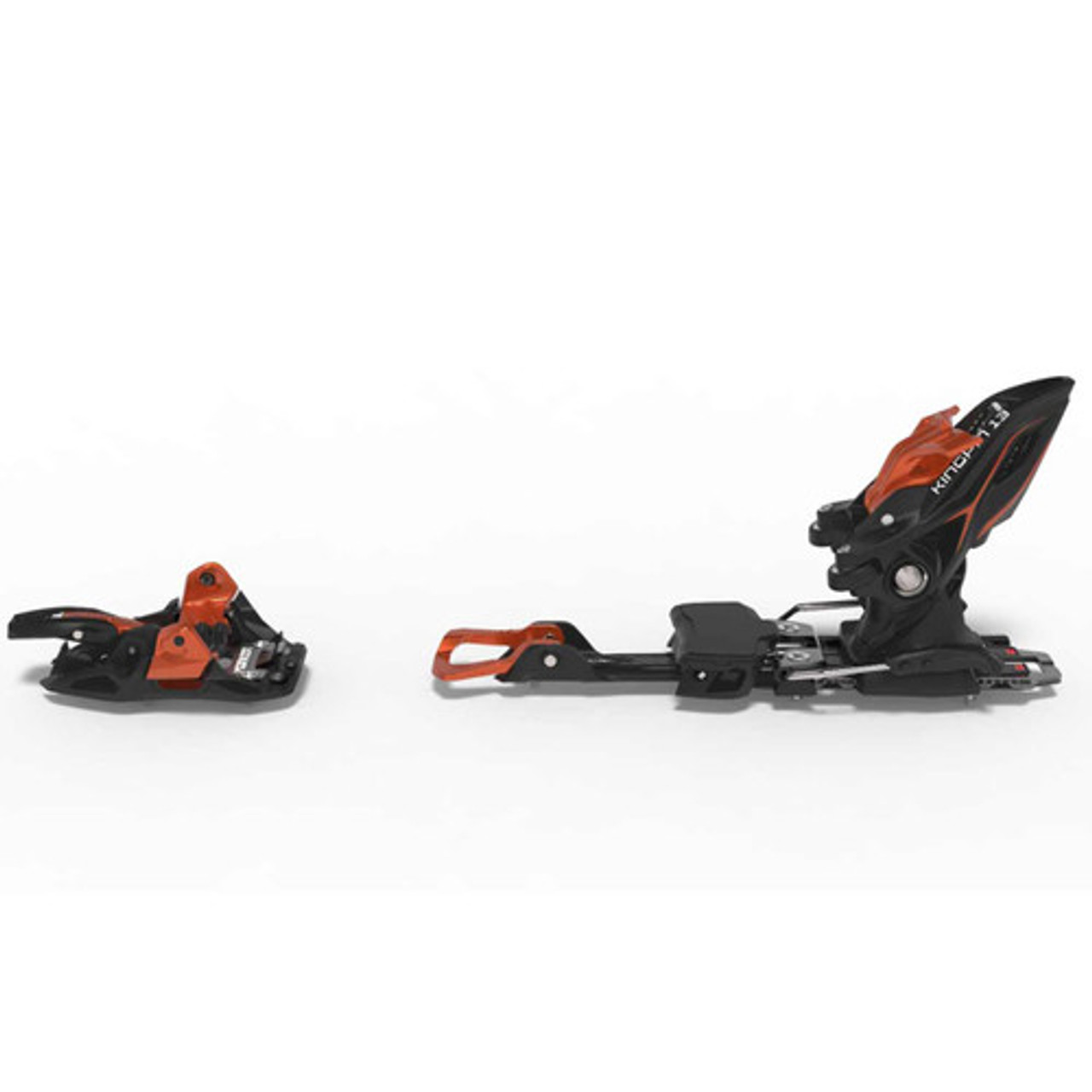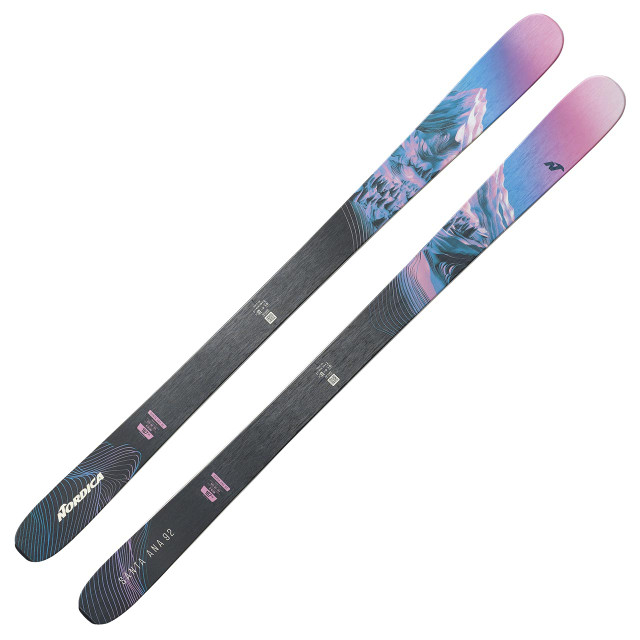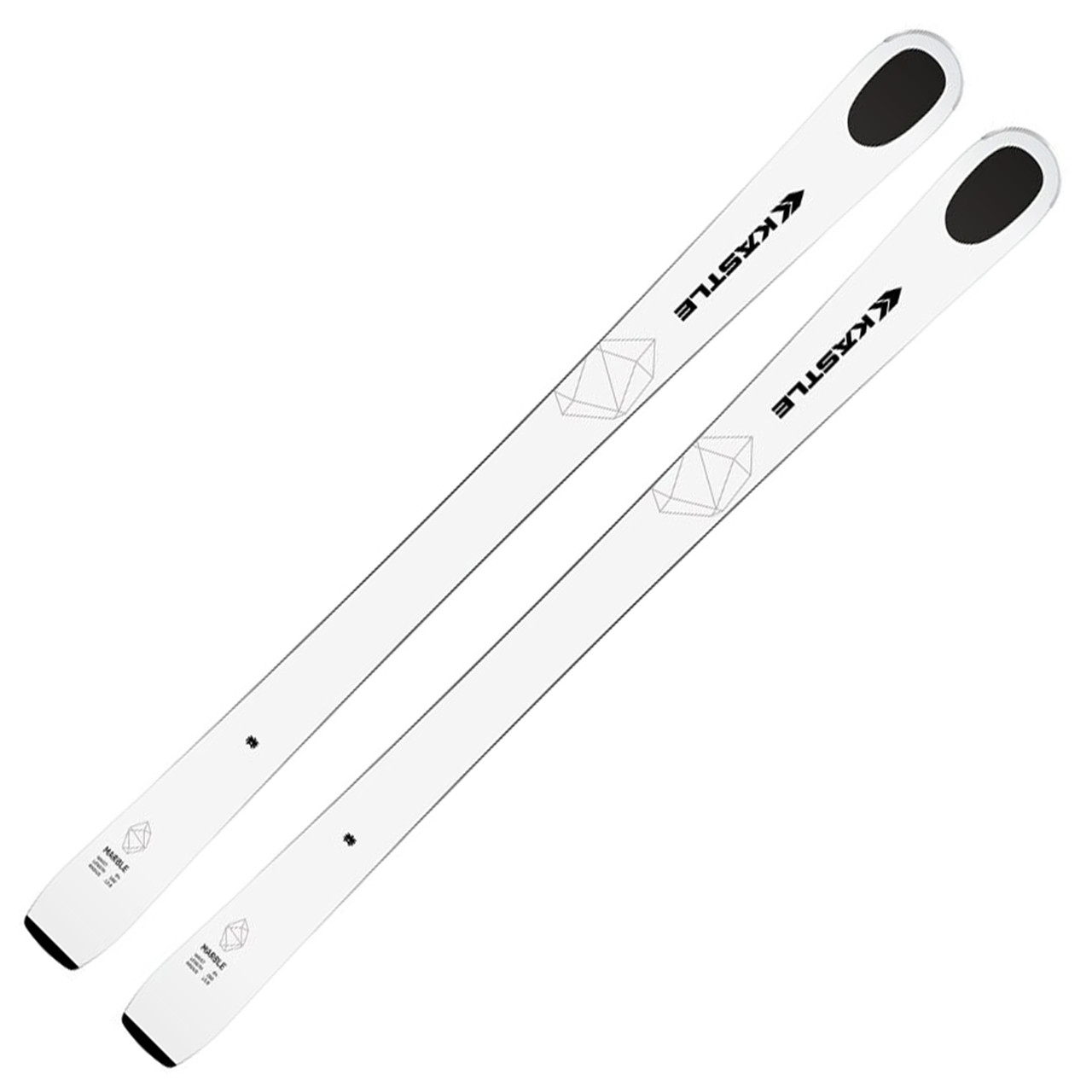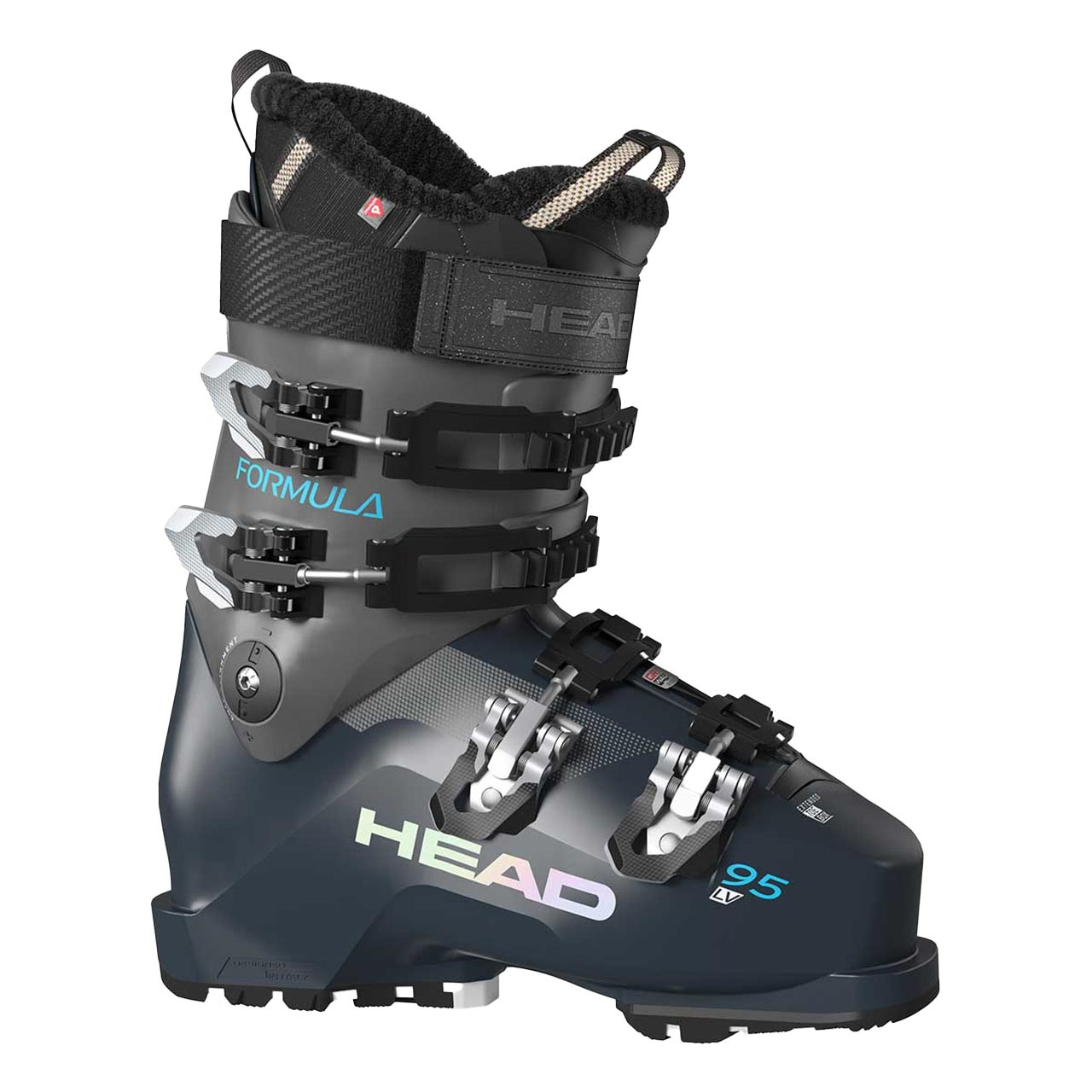Selecting Your First Pair of Women’s Skis: A Beginner’s Guide
Jan 6th 2025
Are you ready to hit the slopes but feeling uncertain about how to choose your first pair of women’s skis? At Outdoor DIVAS, we understand how overwhelming it can be to navigate the wide range of options available. That’s why we’re here to help you every step of the way. Our team of experts will guide you in determining the ideal ski length and width, exploring the different types of women’s skis, and understanding ski flex and construction materials. By the end of this guide, you’ll feel confident in your selection, ensuring every carved turn brings you joy this winter. Let us simplify the process and get you ready for an exciting adventure on the slopes!
Determine Your Skiing Style and Ability Level
Selecting the right pair of women’s skis begins with assessing your current skill level and skiing goals. At Outdoor DIVAs, we recommend starting by identifying your ability level, the terrain you plan to ski on, and your aspirations for skill progression. Whether you’re sticking to groomed runs or envisioning tackling more adventurous terrain, understanding these factors ensures you’re equipped with skis that perfectly match your needs.
Assessing Your Current Skill as a Beginner Skier
As a beginner skier, it’s important to reflect on your current comfort level on the slopes. Consider your ability to make turns, control your speed, and handle various terrains. Many of our team members recommend starting with skis that are forgiving and stable, providing you with the confidence to grow your skills. For example, if you’re transitioning from snowboarding, you might need skis that offer additional support and versatility to match your progression. For those looking to explore options, visiting a Vail ski shop might be a very good start.

Knee Carbon 14 | Knee Binding
The top of the line KneeBinding provides all the additional performance and protection features with a more aggressive retention range (5 to 14), wrapped up in a shell of blended industrial resins and hi-tech carbon fibers for additional stiffness, toughness, and slightly less weight. Like all KneeBindings, they are manufactured in the USA for world-class retention and legendary control/performance on any terrain or conditions for the ultimate in confidence. Manufactured in the USA.
Shop Now
F10 Tour S265-325 | Marker
If the occasional tour might be in your future, give yourself the versatility to take on both adventures in and out of bounds with F10 tour. Lighter than many frame touring bindings the F10 skis just like your every day set up and no need for special boots to start hiking. While not the most efficient uphill option, if touring is not your main goal this binding is an affordable way to have the flexibility to hit the skin track or tag along on the next hut trip.
Shop Now
Kingpin 13 | Marker
If you can't decide whether backcountry or freeride is your priority, get the alpine touring binding that will do both. The Kingpin 13 has a robust toe design with oversize steel springs that perform equally as well on the up as the down. Paired with a more traditional heel piece this binding will give you the confidence to approach all terrain whether in a resort or beyond.
Shop NowIdentifying the Terrain You Plan to Ski On
Where do you envision yourself skiing? If you’re drawn to groomed runs at your local resort, skis designed for stability and control—like the Nordica series—may be a great fit. For those considering off-piste terrain or powder adventures, we recommend skis that handle variable conditions, such as the Mantra. The right skis paired with reliable bindings will ensure you’re prepared for the challenges of your chosen terrain.
Setting Goals for Your Skiing Progression
Clear skiing goals are essential for selecting the right gear. Do you want to master parallel turns, increase your speed, or explore off-piste trails? Each goal may require skis with specific features. For instance:
| Goal | Skill Focus | Recommended Ski Features |
|---|---|---|
| Master Parallel Turns | Turning Technique | Shorter Length, Moderate Flex |
| Increase Speed on Piste | Speed Control | Stiffer Construction, Longer Length |
| Explore Off-Piste | Stability and Control | Wider Tail, All-Mountain Design |
Our team at Outdoor DIVAS is here to help match your goals with the best ski options.
Explore Different Types of Women’s Skis
When choosing your first pair of skis, it’s essential to understand the different types available and how they align with your skiing style. At Outdoor DIVAS, we offer a curated selection of skis tailored to meet the needs of all beginners.
All-Mountain Skis for Versatility Across Terrains
All-mountain skis are a popular choice for beginners, offering excellent performance across a variety of terrains. Designed for groomed runs and off-piste conditions, these skis provide stability and maneuverability, helping new skiers build confidence. Brands like Rossignol and K2 are known for their beginner-friendly all-mountain models.
| Feature | Description |
|---|---|
| Versatility | Suitable for both groomed and off-piste skiing |
| Stability | Provides a solid base for beginners |
| Skill Development | Helps in mastering various skiing techniques |
| Brand Options | Popular brands include Rossignol and K2 |
Carving Skis for Smooth Turns on Groomed Slopes
Carving skis are specifically designed for smooth turns on groomed slopes, making them an excellent choice for beginners like me who want to improve their technique. The length of these skis typically ranges from shorter to moderate, which helps in achieving a tighter turning radius, allowing for better control and precision on the terrain. When selecting a carving ski, we recommend that you consider the compatibility with my ski boot, ensuring a snug fit that enhances my overall performance and comfort while navigating the slopes.
Freestyle Skis for Park and Trick Enthusiasts
If you’re drawn to park features or tricks, freestyle skis offer the flexibility and durability needed for jumps and rails. When selecting gear, look for models that offer a balance of stiffness and flexibility, as this combination allows for better control during jumps and rail slides. Freestyle ski brands provide excellent options with metal reinforcements that enhance durability, ensuring that the skis can withstand the rigors of freeride terrain while helping progress your skills.
- Freestyle skis are ideal for park and trick enthusiasts.
- Look for a balance of stiffness and flexibility for better control.
- Dynastar offers durable options with metal reinforcements.
- These skis help in progressing skills on jumps and rails.
Powder Skis for Deep Snow Adventures
For those dreaming of soft powder days, wider skis with rockered tips are essential. Powder skis offer the floatation and stability needed to navigate deep snow, making them a must-have for adventurous skiers. Top brands like Blizzard and Salomon are excellent options for these conditions.
| Feature | Description |
|---|---|
| Wider Waist | Provides better floatation in deep snow |
| Rockered Tip | Enhances maneuverability and control |
| Stability | Helps maintain balance in variable conditions |
| Recommended Brands | Look for options from brands like Blizzard and Salomon |
Choose the Right Ski Length and Width
Selecting the proper ski length and width is crucial for control and performance on the slopes. At Outdoor DIVAS, we recommend factoring in your height, weight, and skiing goals to find the perfect fit. Our team is here to guide you through the process and ensure your skis meet your needs and aspirations.
Understanding How Ski Length Affects Control
Shorter skis are easier to maneuver, making them ideal for beginners focusing on turns and control. Longer skis, on the other hand, provide greater stability at higher speeds. Our team can help you determine the optimal ski length based on your height and weight, ensuring a tailored fit for your skill level and skiing goals.
Calculating the Ideal Ski Size Based on Your Height and Weight
Finding the ideal ski size requires taking into account both your height and weight to ensure the best performance. Ski sizing charts, like the one below, offer general guidelines to help you choose skis that fall between your chin and the top of your head. Adjustments may be necessary based on your weight—heavier skiers often benefit from longer skis for added stability, while lighter skiers may prefer shorter skis for better maneuverability.
| Height (inches) | Recommended Ski Length (cm) |
|---|---|
| 5'0" – 5'2" | 140 – 150 |
| 5'3" – 5'5" | 150 – 160 |
| 5'6" – 5'8" | 160 – 170 |
| 5'9" – 6'0" | 170 – 180 |
Considering Ski Width for Stability and Maneuverability
Ski width significantly impacts stability and maneuverability, and understanding this balance is key to choosing the right skis. Wider skis provide better floatation in soft snow, making them ideal for maintaining control in varied conditions. Narrower skis, however, allow for quicker turns and easier handling on groomed runs, which can be especially helpful for beginners. At Outdoor DIVAS, we’ll help you identify the ski width that best supports your current ability and growth as a skier.
Evaluate Ski Flex and Construction Materials
Selecting beginner-friendly skis often means prioritizing softer flex and construction materials that enhance forgiveness and control. At Outdoor DIVAS, we recommend choosing skis with these qualities to support skill development on a variety of terrains. Factors like core materials, rocker, and camber profiles also play an important role in determining how skis perform.
Benefits of Softer Flex Skis for Beginners
Softer flex skis provide greater forgiveness and are easier to control, making them ideal for beginners. Their flexibility allows for quick adjustments, helping build confidence and refine technique. Many of the skis we recommend for beginners are designed with these characteristics to ensure a smooth learning curve.
Investigating Core Materials and Their Impact on Performance
Core materials are a key consideration when choosing skis. Skis with wood cores often balance flexibility and stability, while composite or foam cores are lighter and more forgiving. Each option offers unique benefits, and our team can guide you toward skis with materials that align with your skill level and performance needs.
The Role of Rocker and Camber Profiles in Ski Design
Rocker and camber profiles significantly influence how skis handle different conditions. Rocker, with its upward curve at the tip and tail, enhances maneuverability and floatation in powder. Camber, which features a slight arch underfoot, improves edge control and stability on groomed runs. By understanding these profiles, you can select skis that match your skiing style and preferred terrain:
- Rocker enhances maneuverability and floatation in powder.
- Camber improves edge control and stability on groomed runs.
Our team can help explain these dynamics further and recommend skis that align with your progression as a skier.
Research Beginner Skis for Women Ratings
Finding the best beginner skis involves researching top-rated models tailored to new skiers. At Outdoor DIVAS, we focus on features like flexibility and stability to help you feel confident as you learn. Reviews and testimonials are excellent tools to guide your decision, and we’re here to simplify the process.
Top-Rated Women's Skis for New Skiers
Our recommendations for beginner skis include top-rated models like the Rossignol Experience W and the K2 Luv Machine, which consistently stand out for their forgiving flex and stability. These skis are designed to help you build confidence and enjoy your time on the slopes.

Santa Ana 102 | Nordica
Nordica’s Santa Ana 102 keeps you smiling from first chair to last. As the widest ski in the Santa Ana collection, it inspires confidence with a ride that’s as playful as it is versatile. And while it’s at home in any terrain and all conditions, it loves making turns in softer snow, seeking out powder in the trees, and lapping spring slush.
Shop Now
Santa Ana 92 2026 | Nordica
Fall in love with skiing all over again with Nordica’s Santa Ana 92. A favorite among skiers who spend most of their time on trails, this all-mountain ski offers tremendous versatility and no shortage of confidence.
Shop Now
Marble 84 | Kastle
Marble84 is an all-mountain ski that offers lightweight and forgiving handling for its rider - in any terrain. A perfect all-mountain ski for women seeking enjoyable and effortless carving in all snow conditions.
Shop NowKey Features Highlighted in High-Rated Skis
High-rated skis for beginners often emphasize flexibility and stability—key factors for learning control and improving technique. By focusing on these features, our team ensures that you select skis perfectly suited to your skill level and aspirations.
Comparing Models Based on Reviews and Testimonials
We encourage you to explore customer reviews and expert testimonials, as they offer valuable insights into how specific skis perform. At Outdoor DIVAS, we’re happy to help you analyze these details and compare models to find the perfect fit for your skiing journey.
Understanding How Ratings Reflect Performance and Ease of Use
High ratings often reflect features that enhance control, stability, and overall ease of use—key priorities for new skiers. Let us help you navigate these ratings to ensure you choose skis that meet your needs and support your growth on the slopes.
Select Compatible Bindings and Boots
Choosing bindings and boots that complement your skis is essential for a safe and enjoyable skiing experience. Our team can help you select bindings suited to your skill level and comfortable boots that enhance control while reducing the risk of injury.
Choosing Bindings That Match Your Skis and Skill Level
Bindings must match both your ski model and skill level to perform properly. For beginners, bindings with lower DIN settings allow for easier release in case of a fall. At Outdoor DIVAS, we’ll guide you toward bindings that prioritize safety and responsiveness. For more information, you can explore our ski bindings.
Finding Comfortable Ski Boots for Better Control
Properly fitting ski boots are crucial for control and comfort on the slopes. Softer flex boots are forgiving and ideal for beginners, helping you focus on technique without discomfort. Our fitting specialists will ensure your boots meet your needs. For more details, check out our women's ski bootfitting services.

Formula 95 LV | Head
HEAD combines Raptor race knowledge and customizable features in the high-performance yet comfort-oriented FORMULA 95 W LV GW.
Shop Now
Promachine W 105 | Nordica
The Promachine 105 combines high-performance technology with a comfort-oriented women’s specific fit. By using softer liner materials and by articulating the rear cuff of the shell, thus providing more calf space, you are put in a more neutral stance, which decreases fatigue and preserves energy.
Shop Now
S/Pro Alpha 90 | Salomon
Featuring a pre-shaped My Custom Fit™ 3D Seamless Liner, Salomon's S/Pro Supra 90 boots provide great foothold and a comfortable step-in regardless of the shape of your feet. With a women-specific calf adjuster and thinner materials, it's easy to access high levels of comfort on the slopes.
Shop NowImportance of Proper Fit to Prevent Injuries
A proper, snug fit minimizes movement within the boot, which in turn enhances stability on the slopes and reduces the risk of injuries. When your feet are securely held in place, you have better control over your skis and can make precise movements with ease. This is crucial for both beginners and experienced skiers alike, as stability is key to navigating various terrains and conditions safely and effectively.
At our ski shop, our team is dedicated to helping you find the perfect ski boots that offer the ideal balance of comfort and control. We take the time to assess your foot shape, size, and skiing style to recommend boots that will provide the support you need without sacrificing comfort. A personalized approach to boot fitting ensures that you can enjoy your time on the mountain without worrying about discomfort or instability. With the right pair of boots, you can maximize your performance and minimize the risk of potential injuries, allowing you to fully immerse yourself in the exhilarating experience of skiing.
Understanding DIN Settings for Safety
DIN settings refer to the measure of the force required to release a ski binding when a skier falls, preventing potential injury. These settings are essential as they determine how easily the bindings can release during a fall, providing the right balance between holding the ski boot securely in place during normal skiing conditions and releasing it when necessary to prevent injury. For more detailed insights, you may want to read about ski bindings.
For beginners and less experienced skiers, it is recommended to start with lower DIN values to allow for easier and more frequent releases in case of falls or sudden movements. This level of adjustability is crucial in providing a safety net for those who are still learning and may be more prone to tumbles on the slopes. By setting the bindings at the appropriate DIN values, we can help ensure that riders are equipped with the right level of protection and confidence to enjoy their skiing experience to the fullest.
Prepare for Your First Ski Purchase
Buying your first pair of skis is an exciting step, and we’re here to guide you through the process. From deciding whether to rent or buy to budgeting for accessories and maintenance, Outdoor DIVAS is your partner in making the best decision for your needs.
Deciding Between Renting and Buying Equipment
When deciding whether to rent or buy, consider how often you plan to ski, your budget, and the benefits of personalized gear. Renting is cost-effective for occasional skiers, while owning your equipment allows for a tailored experience.
- Assess how often you’ll ski.
- Evaluate your budget for equipment.
- Explore rental options and seasonal sales.
Tips for Shopping in-Store and Online
When shopping for my first pair of women’s skis, it is always helpful to visit local ski shops to get a feel for the equipment. In-store shopping allows you to ask knowledgeable staff questions about different models and try on ski boots for the best fit.
Online shopping can also be beneficial, especially for comparing prices and reading customer reviews, but make sure to check return policies in case the skis don’t meet my expectations. Balancing both methods helps you make an informed decision that aligns with my skiing goals and budget.
Budgeting for Accessories and Maintenance
Shopping in-store provides the opportunity to try on equipment and consult knowledgeable staff, while online shopping offers convenience and price comparisons. At Outdoor DIVAS, we recommend balancing both approaches to make an informed choice.
Let's Get You Ready for the Slopes
Selecting your first pair of women’s skis is a vital step in your skiing journey. By assessing your needs, understanding ski features, and prioritizing proper fit, you can make an informed decision that supports your progression and enhances your confidence. At Outdoor DIVAS, we’re here to help you every step of the way, ensuring your first skiing experience is as rewarding as possible.